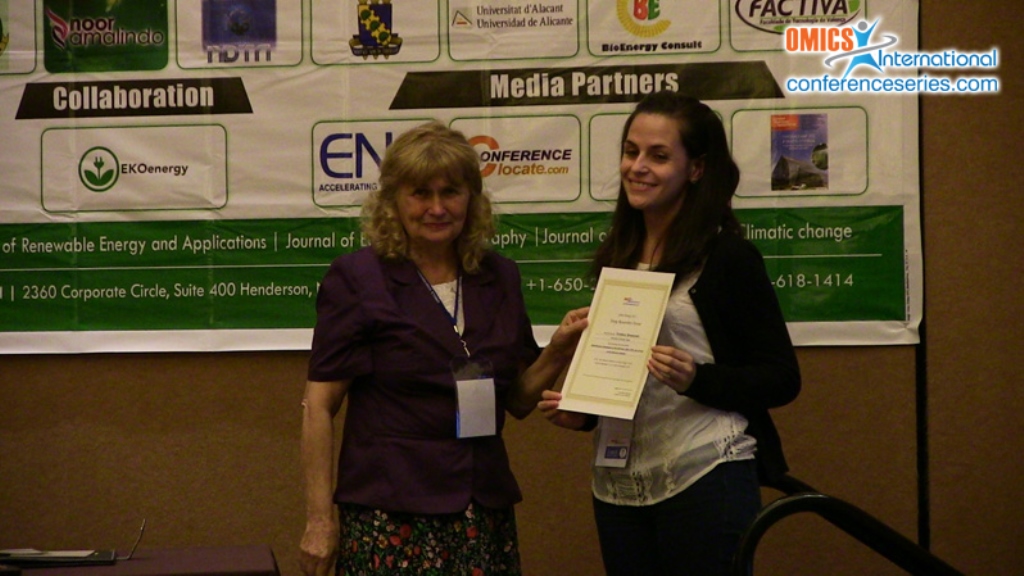
Verónica Benavente
University of Alicante, Spain
Title: Hydrothermal carbonization of olive mill waste: effect of the olive oil load on the hydrochar properties
Biography
Biography: Verónica Benavente
Abstract
The Mediterranean region is currently responsible for a large proportion of the olive oil production worldwide. Spain, Italy, Turkey and Greece are the main producer countries and supplied almost the 80% of the total olive oil produced during the 2013-2014 campaign. The main process used to produce olive oil is a two-phase centrifugation method, which is a relatively new process that solves many issues with the three-phase method: reduces the amount of process water, the energy requirements and the volume of waste generated and improves the quality of the olive oil produced. However, this technology generates a new waste known locally as ‘alperujo’ or two-phase olive mill waste (TPOMW), which is a high polluting by-product that, in addition, has a very high moisture content(>65%). Likewise, depending on the origin, the TPOMW still contains variable olive oil loadings. Current technologies are insufficient in treating this waste and a specific management regarding minimization, valorization and mitigation of their environmental impact is needed. This work focuses on the development of a possible treatment method: the hydrothermal carbonization (HTC) of TPOMW to produce bioenergy feedstocks. Hydrothermal carbonization is a wet thermochemical treatment technique that takesplace in a sealed reactor, where several complex reactions occur to produce a carbon-enriched solid more suitable for energy generation (HTC-char). As the moist waste is heated, the water is evaporated producing autogenous pressure that holds the rest of the water in the liquid phase and, consequently, prevents large amounts of energy being wasted evaporating water. Other pyrolysis processes require a dry feed; HTC reduces the energetic requirements to treat the TPOMW as the water must not be eliminated before this technology. In this work the influence of the initial olive oil loading on the physical and chemical properties of the HTC-char produced form TPOMW was evaluated. Fresh TPOMW was dried at 105º C during 24 h and then the remaining olive oil was totally extracted by accelerate solvent extraction (ASE) with hexane. Afterwards, mixtures of dry and extracted TPOMW (DE-TPOMW), olive oil (OO) and deionized water (DW) were prepared with different ratios (see Table 1). Experiments of HTC were conducted in a high pressure reactor with an internal volume of 1 Lat 225ºC and residence time of 2 hours. Figure 1 shows the diagram flow of the experimental procedure. Finally, several analysis techniques were used to characterize the HTC-char. It was found that after the HTC treatment the olive oil mainly remains in the HTC-char and, consequently, contributes to enhance the global heating value of the solid by approximately 12%. Other characteristics like the solid yield (%) and the hydrophobic properties also improved as the olive oil content in the previous mixtures increased. Thus, on the one hand, the solid yield rose from 50 to over 58% and, on the other, the dewatering of the HTC-chars by mechanical filtration was greaterwith increasing OO. As a result, the moisture content of the HTC-chars after filtration considerably decreased. Therefore, it could be concluded that HTC is deemed to be an effective treatment of TPOMW that will be more beneficial to produce bioenergy feedstocks as the amount of olive oil retained in the raw TPOMW increases.



